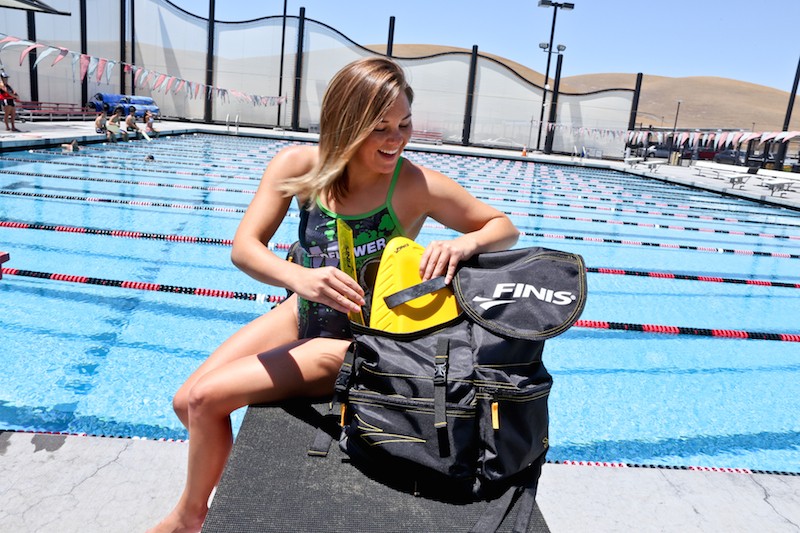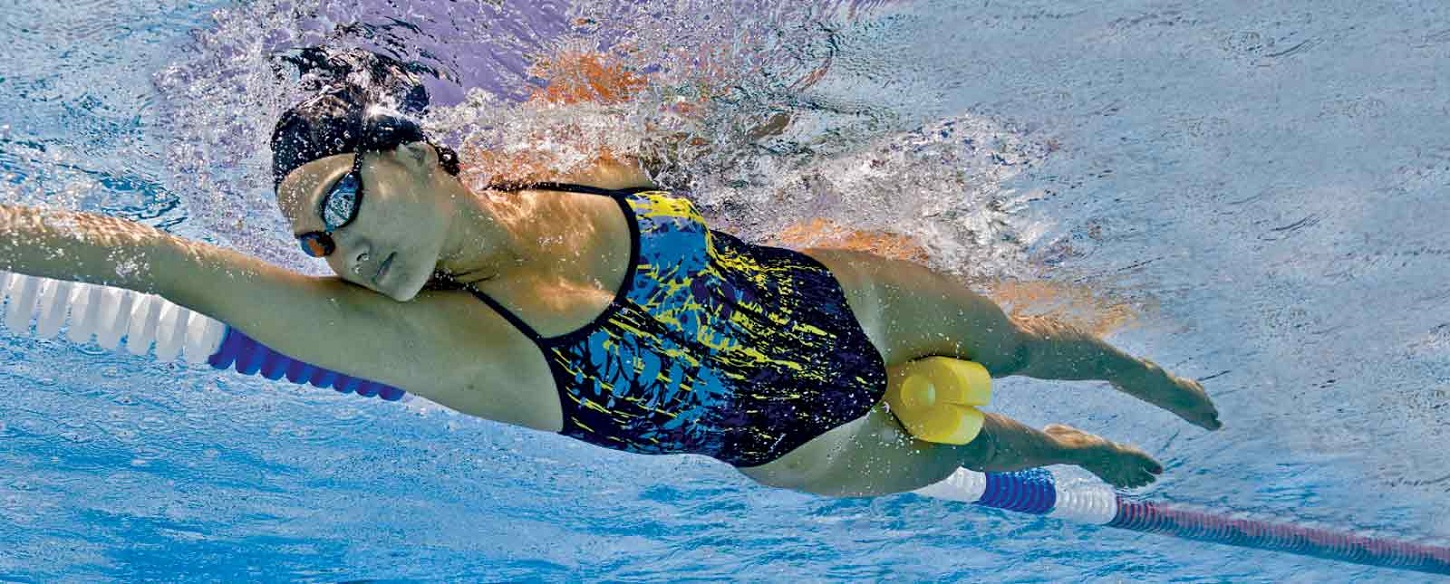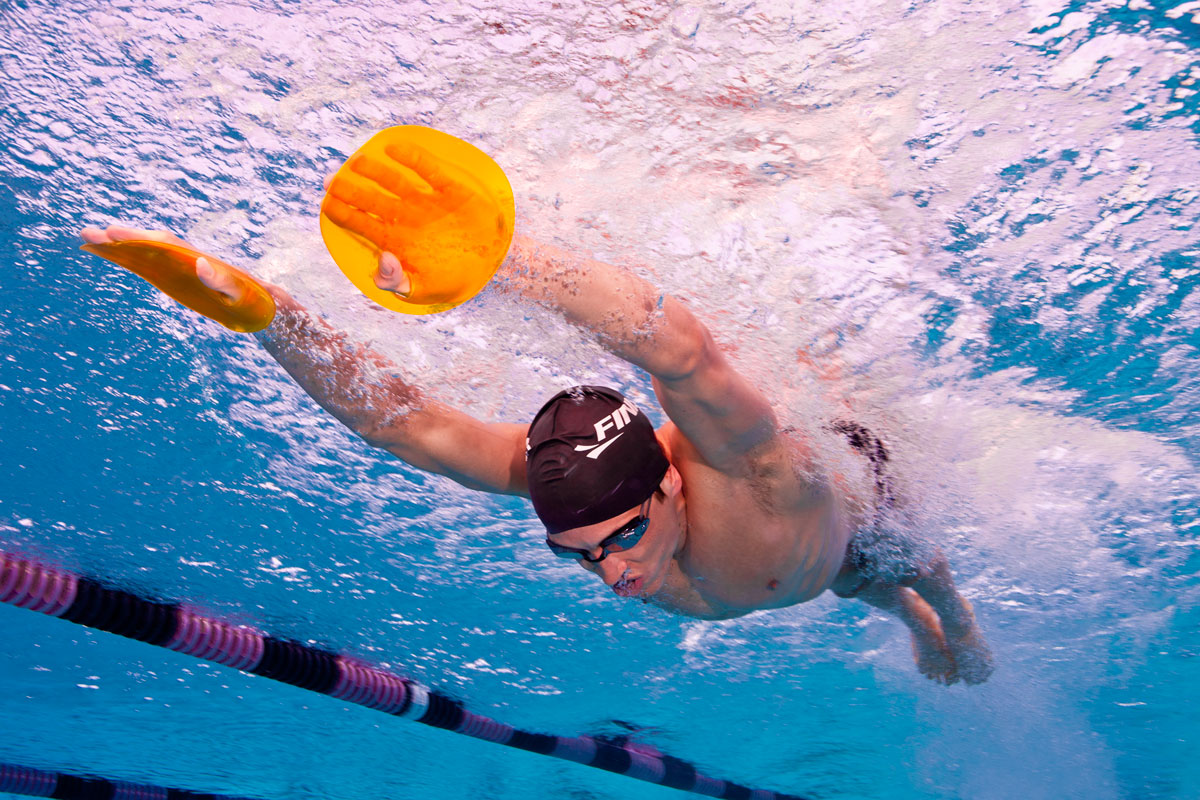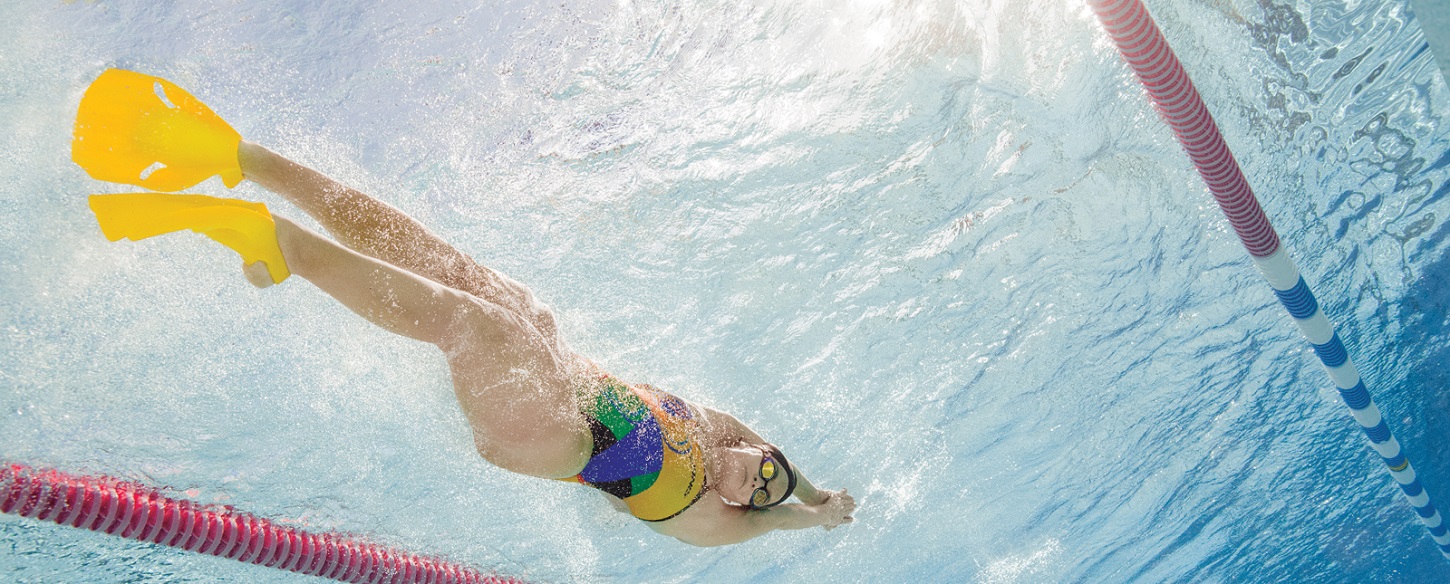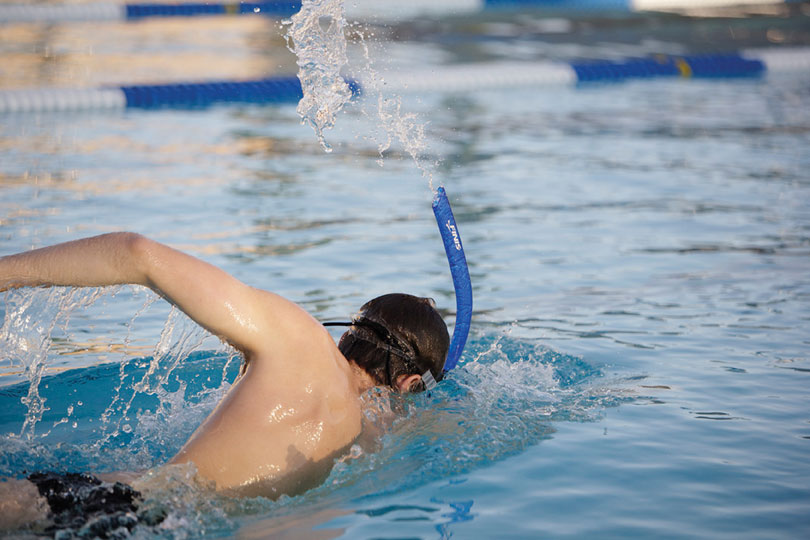Written by Kevin Koskella and Chris Hague, Coaches at Tri Swim Coach
Pool “toys,” like fins, paddles, snorkels and all the other dorky looking objects that fill triathletes’ pool bags, can be a curse or a blessing.
If used incorrectly, too much, or without specific purpose (i.e. because the gal in the swim lane next to you is using them), they can be Band-Aids and crutches; they hold you back from obtaining good, strong form by smoothing out your stroke’s flaws.
Once they are taken away, you go back to your same sinking legs, straight arm pull and mistimed breathing pattern. However, when used correctly, they can be highly effective tools that boost your swim by correcting and improving your form so that you can take your swim to the next level.
How to correctly use a swim toy as an effective tool?
The type of swim tool that you use plays a huge role in as well as what your goals are for that workout. Below you will find some of the most common toys as well as why they work and when to use them.
Pull buoy:
The pull buoy can easily be misused and abused by those whose legs sink or sway to prop their lower body up. It works great until you take the pull buoy away, and they sink like a stone and struggle to keep pace as their effort goes through the roof.
However, that does not mean you should throw it out since you can use the pull buoy to actually improve your form.
Instead of putting the pull buoy between your legs just above the knee, by putting it at your ankles and then using an old inner tube or laundry loop to bind your legs, you increase your proprioception–awareness of what your lower body is doing. This method is particularly effective for those whose lower body tends to sway from side to side.
With this awareness, you can feel yourself rotating more from your core to keep your lower body from swaying. Pull buoys are also good when you want to isolate your upper body and use paddles, or do the first drill. After a tough weekend of cycling and running, pull buoy sets help prevent you from using your legs and gives them a much needed rest.
Paddles:
Like pull buoys, paddles can do more harm than good if used improperly. In particular, for those with weak shoulders or who have had shoulder injuries, paddles can put too much strain on the labrum and aggravate those old injuries.
The standard dinner plate sized paddles that you sometimes see do not help correct your pull, which is why we like the Finis Freestyler Paddle. These actually help correct your freestyle high elbow catch and pull without stressing your shoulders. In workouts, you will want to use paddles for muscular endurance. Try doing sets of 200-400 at the beginning of your workout then do (or try to do) sprints without them after.
Fins:
Fins are a cornerstone of our training tools. But let’s start by mentioning that fins can also easily be misused, especially if you kick simply to rack up more yards on your Garmin to pad your workouts.
If you use those giant scuba fins, then you are getting little to no benefit from those laps.
Zoomers, however, turn those would be unproductive meters and yards into an opportunity to give you better ankle flexibility, and build leg strength. They are also excellent for helping your kick technique. We recommend starting out using Zoomers with the vertical kicking drill, which helps build the muscle memory for a proper freestyle flutter kick.
Tempo timer:
Low swim cadence and turnover is fairly common. Swimmers like to glide through the water and take as few strokes as possible. Although less common, taking too many strokes is also a problem. Swimmers thrash around and do not get very far, but expend a bunch of energy doing it. This is where the tempo trainer comes in; it gives an audible beat in order to match your stroke to the sound. Over time, you gradually increase, or decrease in some cases, your stroke to find the optimal turnover for you.
How do you know?
You can tell if you are reaching an optimal turnover for you when you begin to swim faster with less energy expenditure, good rotation, and without any dead spots in your stroke.
Snorkel:
The snorkel is a great tool for learning stroke technique while leaving out the most difficult part of freestyle, breathing. Snorkels allow swimmers to isolate the stroke, without having to worry about getting air. They are also a big help in getting the right head position in freestyle, and will help build stronger lungs. Like fins, there can be an over-reliance on snorkels, so it’s best to use them on specific sets or drills as opposed to the majority of workouts.
So don’t throw out your toys quite yet. Use them tactically, sparingly, and with purpose to improve your form and increase strength!
 About the Authors: Kevin Koskella and Chris Hague are coaches at Tri Swim Coach. Kevin is the Head Coach at Tri Swim Coach. He was an All-American swimmer in college and coaches masters swimmers and triathletes. Kevin contributes to Triathlete Magazine, Inside Triathlon Magazine, Men’s Health Magazine, Active.com, and many more.
About the Authors: Kevin Koskella and Chris Hague are coaches at Tri Swim Coach. Kevin is the Head Coach at Tri Swim Coach. He was an All-American swimmer in college and coaches masters swimmers and triathletes. Kevin contributes to Triathlete Magazine, Inside Triathlon Magazine, Men’s Health Magazine, Active.com, and many more.
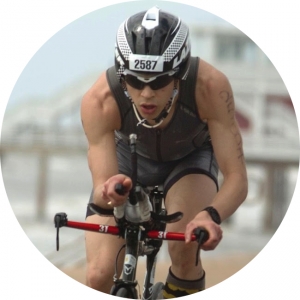 Chris Hague is the Assistant Coach at Tri Swim Coach, and swam competitively at the collegiate level and has competed in triathlons since 2007. Chris is now juggling a full time triathlon career while pursuing a career in psychology and public health.
Chris Hague is the Assistant Coach at Tri Swim Coach, and swam competitively at the collegiate level and has competed in triathlons since 2007. Chris is now juggling a full time triathlon career while pursuing a career in psychology and public health.

